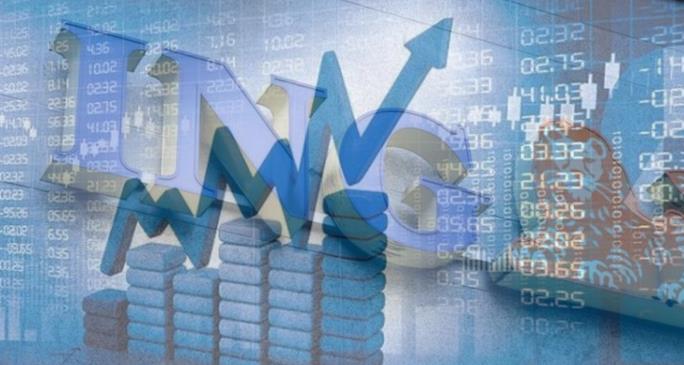
ING Group Projects Steady Growth For Azerbaijan's Economy In Two Consecutive Years
Azerbaijan's economy has shown remarkable resilience in recent years, and international forecasts for the coming years remain cautiously optimistic, with the ING Group of the Netherlands providing a positive yet balanced outlook. The ING forecast suggests that Azerbaijan's economy will continue to grow steadily in the near future, bolstered by a mix of domestic and external factors. The outlook for 2025 and 2026 reflects a moderate pace of economic expansion, driven by key sectors such as energy, infrastructure, and strategic investments.
Economic growth: Steady yet promising
According to ING's forecast, Azerbaijan's economy is projected to grow by 2.6% in 2025 and 2.8% in 2026. These figures indicate a stable growth trajectory, aligning closely with previous projections. Despite global economic uncertainties, the forecasted growth rates are indicative of the country's ability to maintain its momentum, especially given the robust performance in 2024, where GDP growth exceeded 4%. The first quarter of 2025 is expected to see a growth rate of 2%, which will gradually accelerate to 3% by the third and fourth quarters of the year. This gradual pickup in growth is expected to continue into 2026, with a slight moderation in the last quarter, forecasted at 2%.
The relatively stable and predictable economic outlook from ING complements other international assessments. The government of Azerbaijan forecasts a GDP growth of 3.5% in 2025, slightly more optimistic than ING's, but still within the same range. Other institutions, such as the World Bank and the United Nations, project similar growth rates, suggesting a consensus view of steady growth across various sectors.
Inflation and Central Bank's strategy: Controlling price stability
Another significant aspect of ING's forecast is the projection for inflation, which is expected to avarege 4% in 2025, slightly increasing to 4.5% in 2026. This represents a modest uptick compared to previous years and reflects ongoing pressures on global commodity prices and internal demand dynamics. However, it is important to note that the Central Bank of Azerbaijan (CBA) has implemented policies aimed at maintaining inflation at manageable levels. The Central Bank is expected to keep its discount rate at 7.25 % in 2025, with a slight increase to 7.75 % in 2026, a move that aims to control inflation without stifling economic growth.
In contrast, the Ministry of Economy anticipates inflation to be somewhat lower, projecting an annual rate of 4.6% in 2025 and 4% in 2026. This variation in inflation expectations underscores the complexities of forecasting in an environment characterized by both domestic and international uncertainties. Nonetheless, Azerbaijan's central bank has shown resilience in its monetary policies, and it is anticipated that the CBA's decisions will continue to play a crucial role in stabilizing inflation and supporting growth.
External and domestic drivers of growth
Azerbaijan's economic growth is heavily influenced by several key factors, both internal and external. The country's rich energy resources, particularly oil and gas, remain a central pillar of its economy. Although global oil prices have fluctuated, Azerbaijan's role in regional energy markets ensures continued demand for its energy exports. Furthermore, Azerbaijan's strategic investments in infrastructure, such as the development of transport corridors connecting Europe and Asia, are expected to support long-term economic diversification.
International investments and regional cooperation also present opportunities for growth. Azerbaijan has been steadily increasing its focus on sectors such as tourism, agriculture, and information technology, aiming to reduce its dependency on energy exports. These diversification efforts align with global trends where countries are investing in sustainable and innovative sectors to create a more resilient economy.
In conclusion, ING's forecast for Azerbaijan's economy in 2025 and 2026 presents a cautiously optimistic view. While global challenges persist, Azerbaijan's economic growth is expected to remain stable and moderate. With projected GDP growth rates of 2.6% in 2025 and 2.8% in 2026, the country is poised to continue its trajectory of sustainable development. Though inflation is anticipated to rise slightly, the Central Bank's proactive monetary policies should help mitigate risks, ensuring price stability in the economy.
The forecasted growth also reflects the government's ongoing efforts to diversify the economy, invest in infrastructure, and position Azerbaijan as a regional economic hub. By maintaining a balanced approach, Azerbaijan can capitalize on its strengths while adapting to the global economic landscape.
Ultimately, while challenges remain, the outlook for Azerbaijan's economy remains largely positive. With steady growth and effective monetary policies, the country is on track to secure its place as a stable and growing economy in the region.
Legal Disclaimer:
MENAFN provides the
information “as is” without warranty of any kind. We do not accept
any responsibility or liability for the accuracy, content, images,
videos, licenses, completeness, legality, or reliability of the information
contained in this article. If you have any complaints or copyright
issues related to this article, kindly contact the provider above.


















Comments
No comment